Post and Photos By Judy Mead
As I counted down the days until my South Africa safari, I started wondering what birds would be viewable in the heart of Winter in South Africa. I live in Colorado and June is the start of summer here, one of the best birding times that we get all year round. Nestlings are just starting to hatch and the parents are often working overtime to make sure that they bring home enough food for their quickly growing broods. Winter birding in Colorado is still exciting, but it is not as good as the spring, summer and fall seasons- most of the colorful birds have left for warmer climates.
Would it be the same in Winter in South Africa? Would I miss all of the unique, colorful birds that South Africa is famous for if I traveled in the winter months? The answer was NO – Winter birding in South Africa is fantastic, with a wide variety of unique and colorful birds, many of which stay in South Africa year-round.
Here are some of the birding hotspots that I enjoyed in June (Winter) within South Africa:
Kirstenbosch Botanic Garden, Cape Town
Kirstenbosch National Botanical Garden is acclaimed as one of the great botanic gardens of the world. Few gardens can match the sheer grandeur of the setting of Kirstenbosch, against the eastern slopes of Cape Town’s Table Mountain. The gardens cover two square miles and have several hiking trails, including the award-winning Tree Canopy Walkway, that allows you to wander within the treetops. Around every corner there is something new to discover with unique trails and artwork sprinkled throughout. There are more than 7,000 plant species, some of which can only be found in the garden, and no where else on earth. 125 species of birds have been observed within the gardens, making the area one of the most diverse in the Cape area. Plan at least a half day at the gardens, but there is plenty to see if you want to spend a full day of exploring with a picnic lunch.
While traveling the walking trails throughout the gardens, I was astonished by the diversity of birds that I saw from the second I stepped through the entrance. Almost immediately I saw Egyptian Geese, multiple duck species and quickly found my favorites of the day- the Fynbos Southern Double-Collared Sunbird and the Swee Waxbill. Sunbirds are Southern Africa’s equivalent of hummingbirds in the Americas. In about 3 hours, I was able to photograph and identify more than 20 bird species and even had some mammals mixed in. Overall, I would highly recommend Kirstenbosch Botanical Gardens; it is truly not to be missed for any outdoor lover visiting Cape Town.
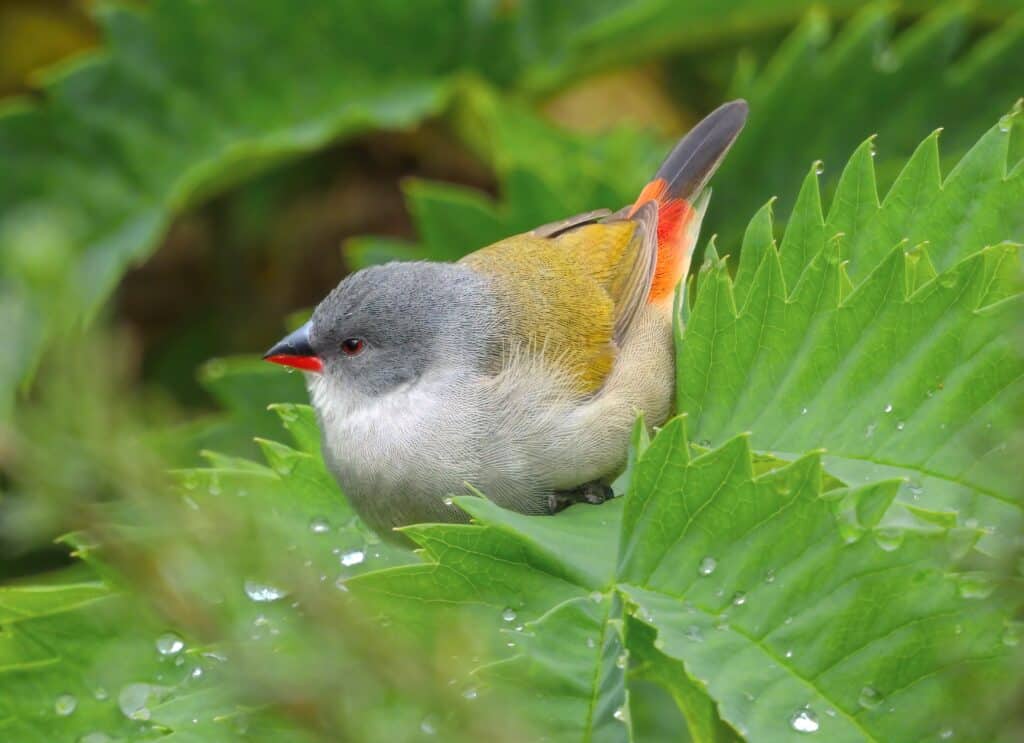
Boulders Beach, Simon’s Town
No trip to Cape Town would be complete without traveling to Boulders Beach to see the African Penguins. Simon’s Town hosts one of the only locations in Africa where you can get up close to penguins in their natural environment. Currently there are between 2,000 and 3,000 of the endangered birds in the colony that calls Boulders Beach home. Penguins returned to Simon’s Town in 1982 and have since been part of a successful combination of human/animal cohabitation. The area is managed by Table Mountain National Park Marine Protected Area, which helps to educate visitors about responsible tourism and conservation, so that the park can be enjoyed by humans and penguins far into the future. Want to add more adventure to your visit? Be sure to add a shark dive or snorkeling with the Fur Seals to the mix.
My time with the African Penguins (sometimes called Jackass Penguins for the loud braying noise they make) was one of the highlights of my trip. In June, I was able to see many nesting pairs of penguins with chicks that were newly hatched, all the way up to chicks that were just about ready to leave the nest. Watching the interactions between the parents as they welcomed each other home after a day of foraging was incredible and very loud- I would recommend visiting the beach in the afternoon to catch these interactions and to enjoy the great lighting as the penguins return to the beach from the ocean. It was too cold to swim in the rock pools during my visit. Instead we headed to the boardwalk on the right of the entrance to avoid most of the crowds. We saw multiple species of sea and tidal birds, and Cape Rock Hyrax, in addition to the penguins while at the beach.
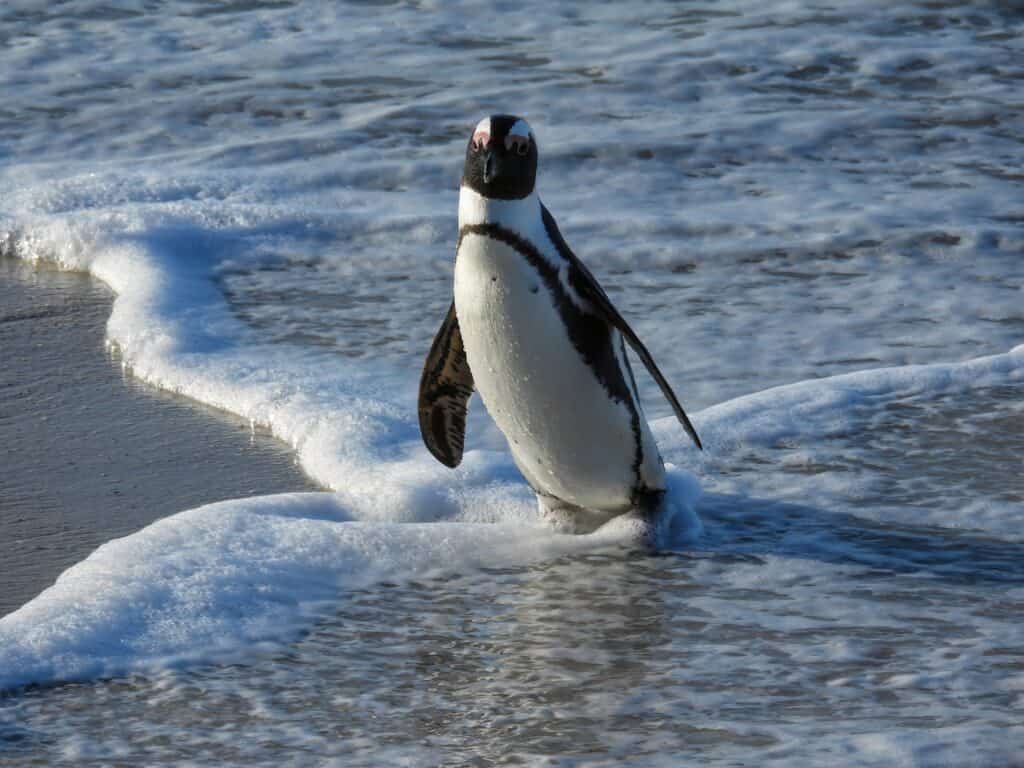
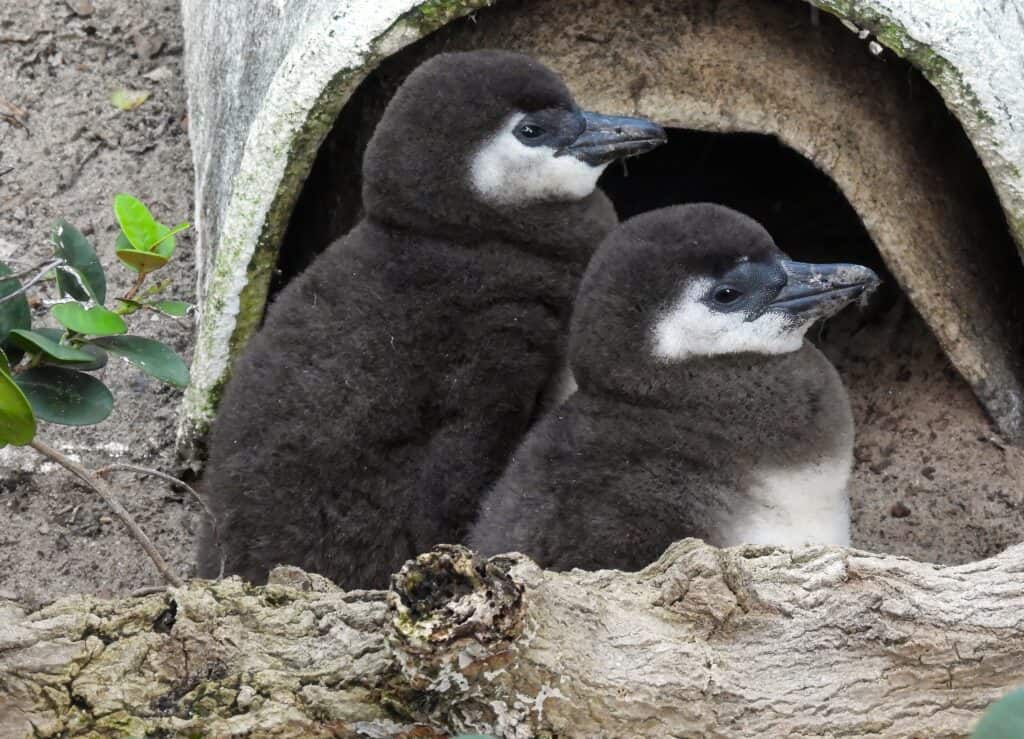
Cape of Good Hope & Cape Point, Southern Tip of Africa
The Cape of Good Hope is home to the only fenced portion of the Table Mountain National Park and is home to several incredible species including the world’s largest bird, the Common Ostrich. Most travelers enter the Cape of Good Hope to see the lighthouse and take the Flying Dutchman Funicular to see the panoramic views, but you are missing out if you do not break from the crowds and explore the vast landscape surrounding the point. Eland and bontebok are found throughout the park, giving it a safari feel.
I was surprised at the diversity of color I found among the birds at the Cape. The Southern Red-winged Starlings met us in the parking lot and made a mess of our lunch, but the highlight of the visit was the Malachite Sunbird. The emerald green of the feeding male Malachite Sunbirds in the orange of the aloe flowers had multiple photographers cut their time photographing the lighthouse short, to get the perfect shot of these gorgeous birds. The Orange-breasted Sunbird also graced us with its presence and the birds were content to feed a few feet from the trails leading to the lighthouse. Once we left the point, we explored more of the national park grounds and found both a female and a male ostrich along with a bontebok, an antelope I had never seen before.
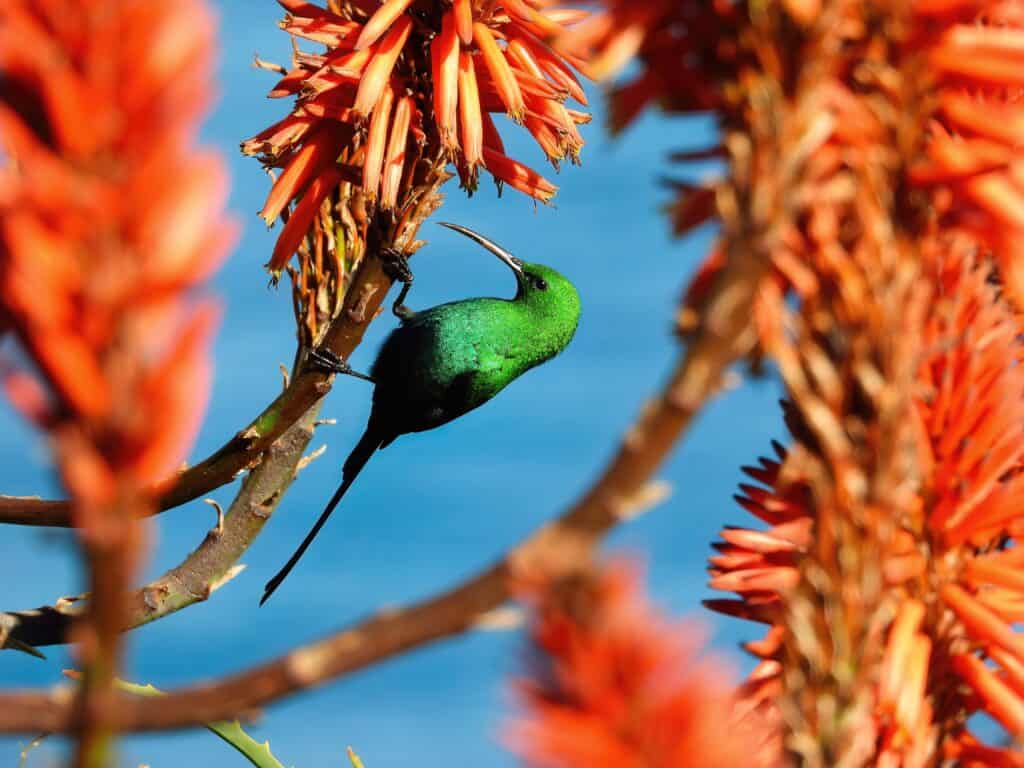
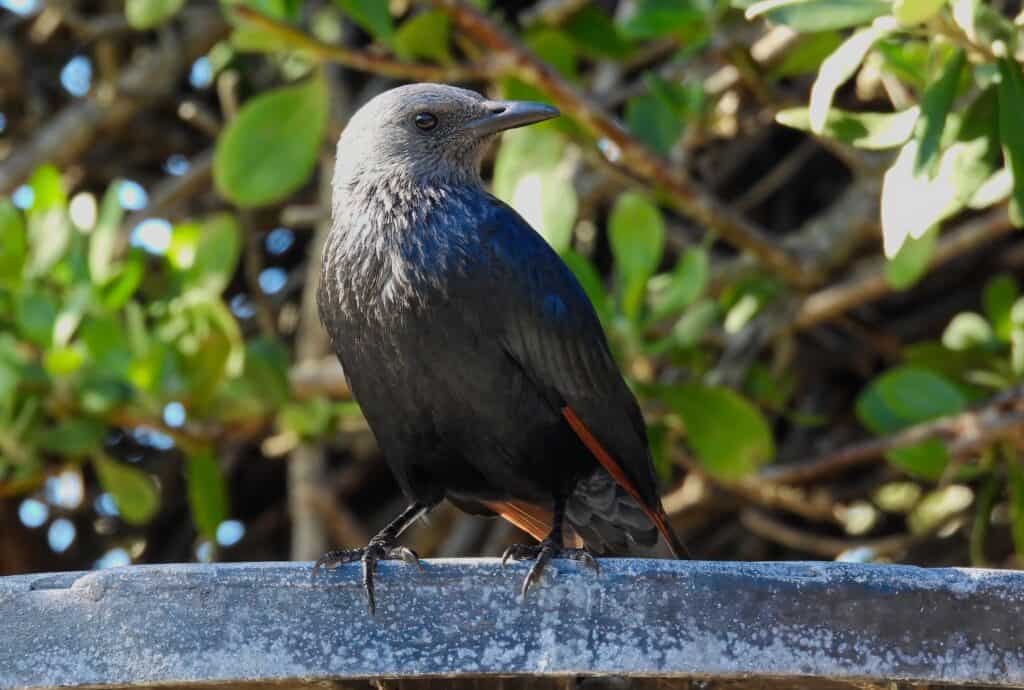
Hluhluwe-iMfolozi Game Reserve, KwaZulu-Natal Province
The Hluhluwe-iMfolozi Game Reserve is famous for its White Rhino (largest population in the world), but the large reserve is also home to a diverse range of bird species with more than 340 different species recorded in the area. Here you can find all the Big 5 animals in one of South Africa’s oldest nature reserves. The reserve is 960 km2 (560 sq. miles) making the reserve a perfect multiday adventure either as a self-drive or as a guided safari. Close to 200 of the park’s bird species are found here year-round, making winter birding in the reserve exciting. Winter songbirds are often found near water while the areas raptors can be found throughout the park. The reserve has a wide range of microclimates and multiple biomes to explore.
I was lucky enough to spend three full days in Hluhluwe-iMfolozi Game Reserve and photographed more than 50 identifiable bird species. Birds were heard every second of the day. The draw of the park for me was a combination of the mammal species and the bird species that left me in awe of the area. We were lucky enough to see 21 White Rhino in one day as well as the rare African Wild Dogs twice. The highlight of the raptors spotted was the Long-crested Eagle, with its long head feathers, that give it the appearance of wearing a hat. We also spotted Fish Eagles, African Black-winged Kites, Bateleurs, White-backed Vultures and Lappet-faced Vultures. The highlights of the smaller birds included the Southern Blue Waxbill, Burchell’s Coucal, Lilac-breasted Roller and the Redface Mousebird. Starlings are common and shine like jewels, some a darker blue and some a striking teal that could be seen from afar. For me the days at the reserve were magical and I would happily go back to spend more time there.
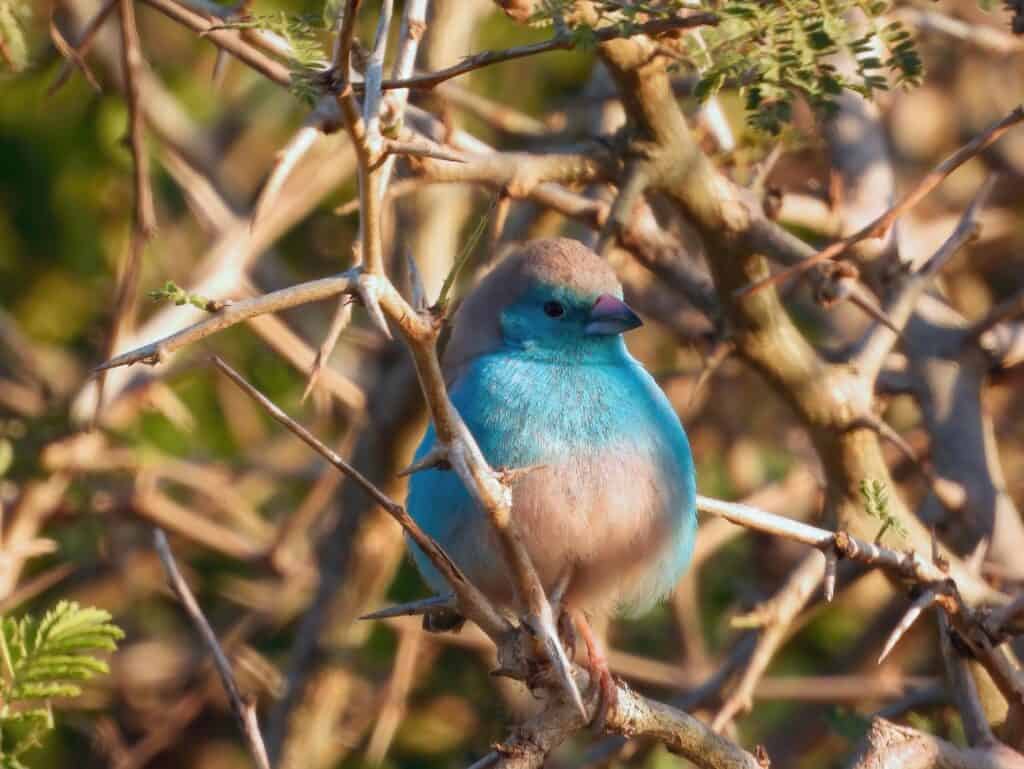
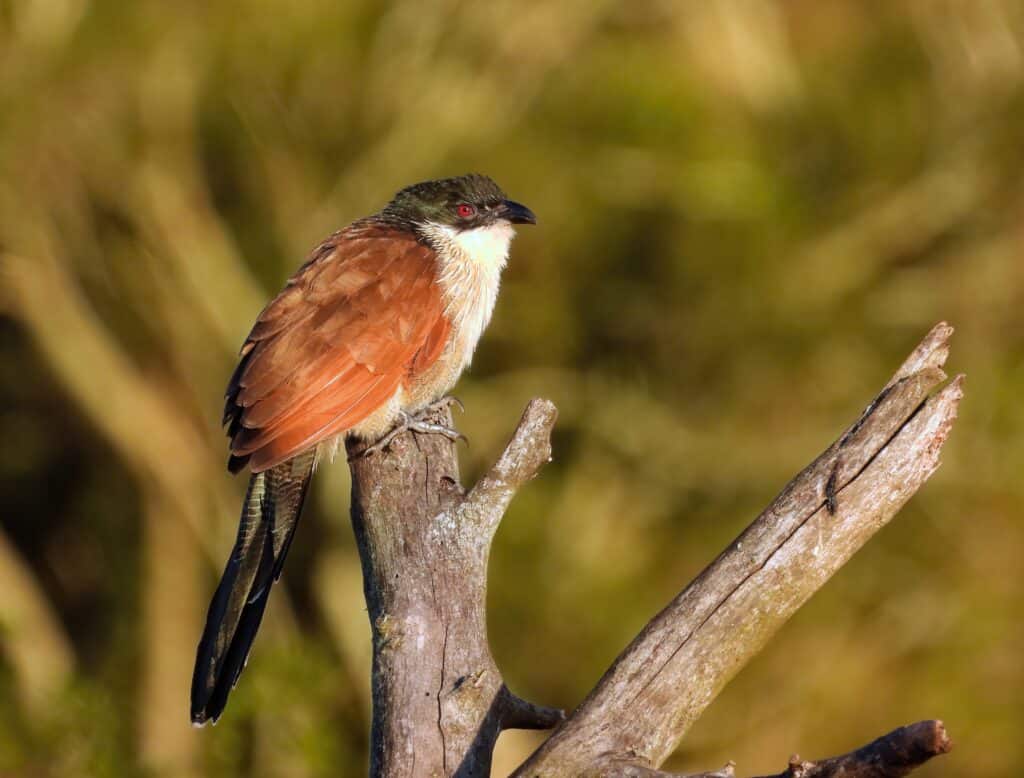
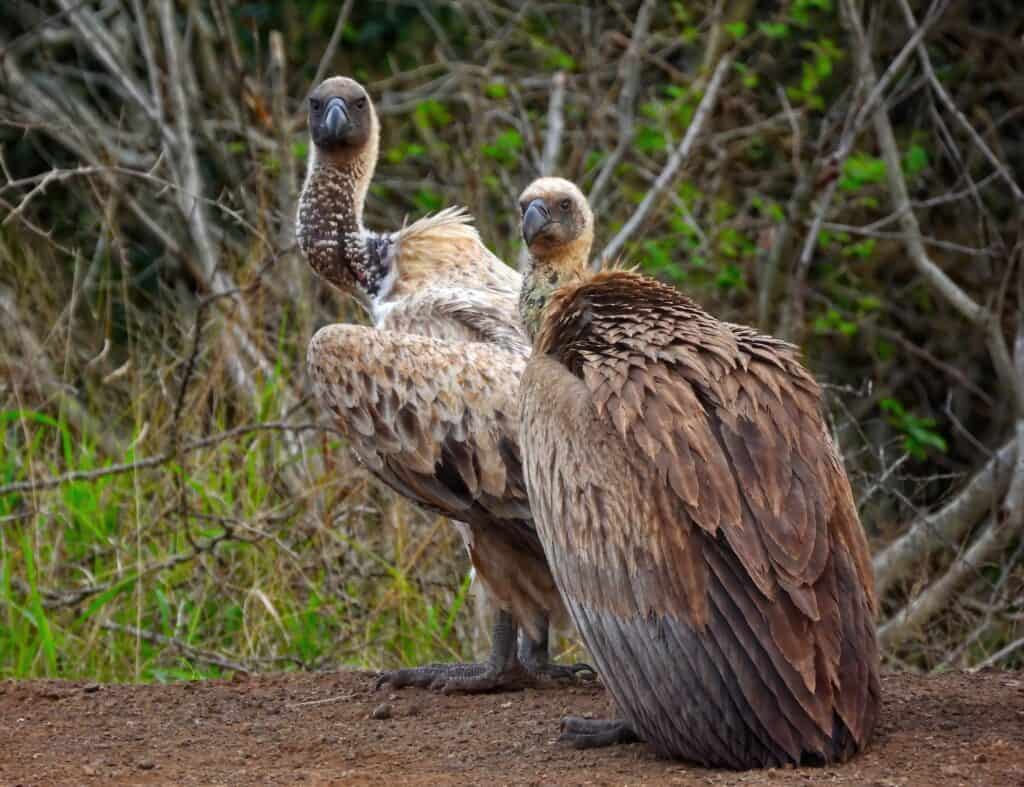
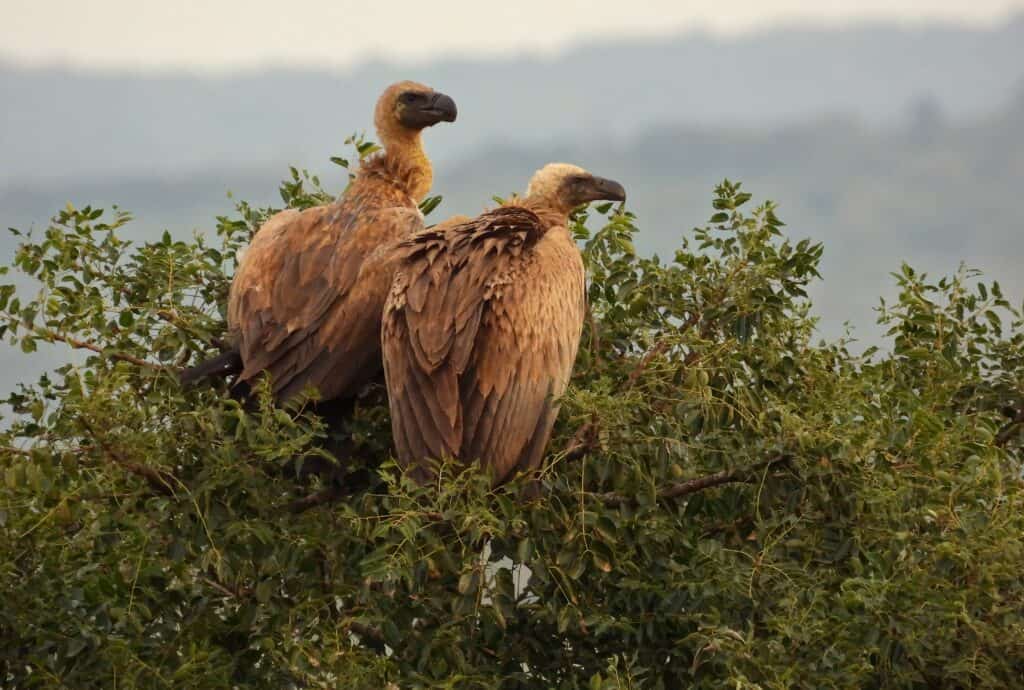
iSimangaliso Wetland Park, St Lucia
iSimangaliso Wetland Park is a huge, protected area along the coast of South Africa’s KwaZulu-Natal Province. The park’s centerpiece is the vast Lake St. Lucia, home to large numbers of hippos, crocodiles, pelicans and flamingos. The park has 530 recorded species of bird, making it one of the best birding hotspots in the whole of Africa. The city of St. Lucia sits within the park on the banks of Lake St. Lucia, giving visitors a jumping off point for boat safaris, night drives and self-drive or guided safaris within the gated portion of the park. I highly recommend birding at night to see a multitude of different bird species rarely seen during the day. Snorkeling in the Indian Ocean is an option year-round as the warm waters make it a fun and relaxing treat even in the winter. In June, the flamingos and the pelicans had migrated to warmer waters, but the birding was still incredible.
At the start of winter, I wasn’t sure that birding in the park would be optimal, but I was wrong. The wetlands attract a large variety of birds from the surrounding drier areas making this one of the best spots to bird in the world, not just in South Africa. I saw wading birds, raptors, sea birds, kingfishers, songbirds, sunbirds and so many more. Everyday was an interesting assortment with new species popping up every few minutes. The African Jacanas and some of the ducks had chicks (and ducklings) that I enjoyed watching. The highlight of the trip was a Crowned Eagle pair that we spotted from almost a mile away. While the pictures were not great, seeing these majestic (and HUGE) raptors was incredible. Multiple species of Kingfisher, including the Giant Kingfisher, were spotted. Even my kids, who only tolerate birding, found the diversity of species within the wetlands exciting and were often calling out when they spotted something new. Birds varied from the large African Wolly-necked Stork to the tiny, rarely spotted Lowveld Collared Sunbird. A trip to iSimangaliso Wetland Park should be on any birder’s bucket list and it did not disappoint even in winter.
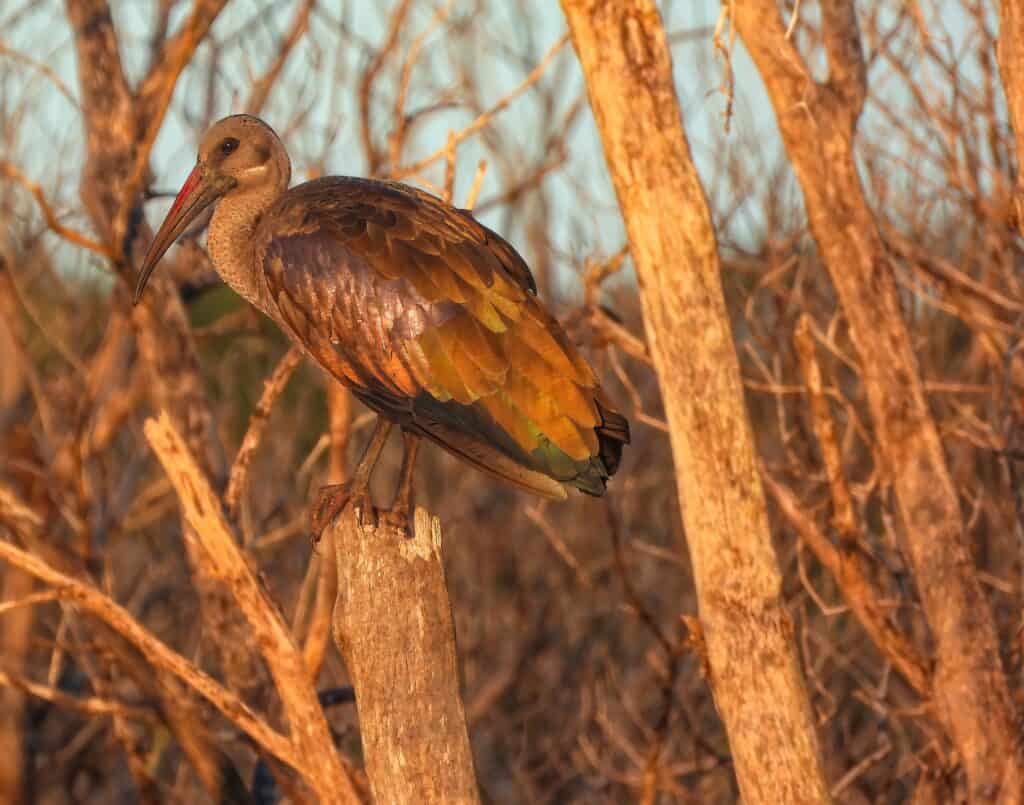
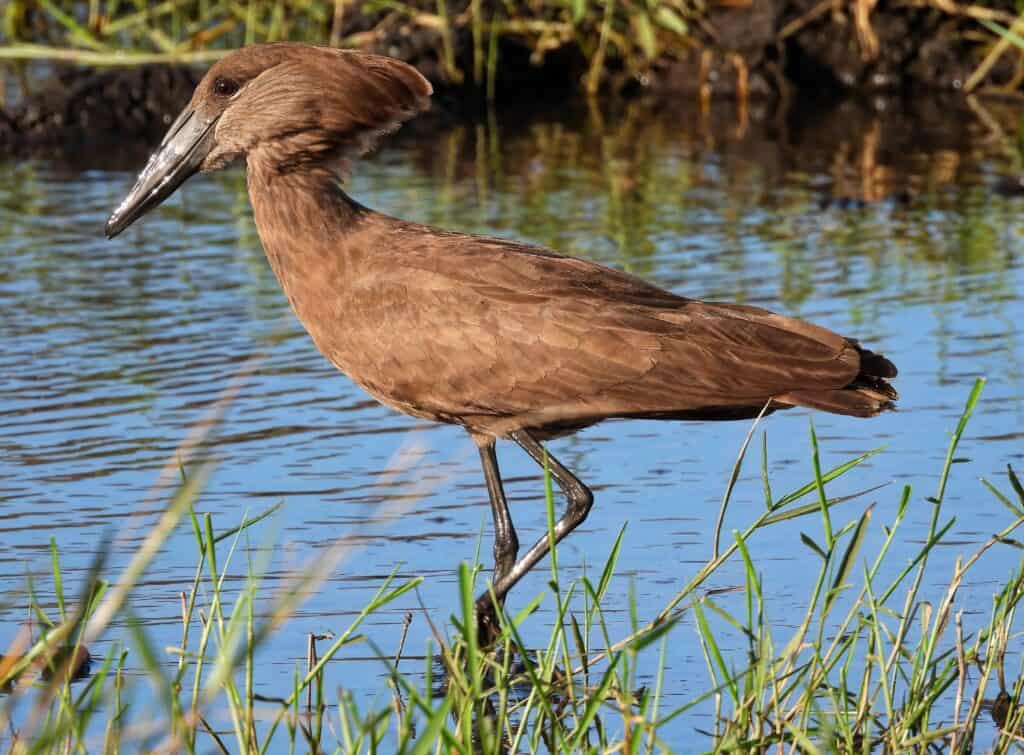
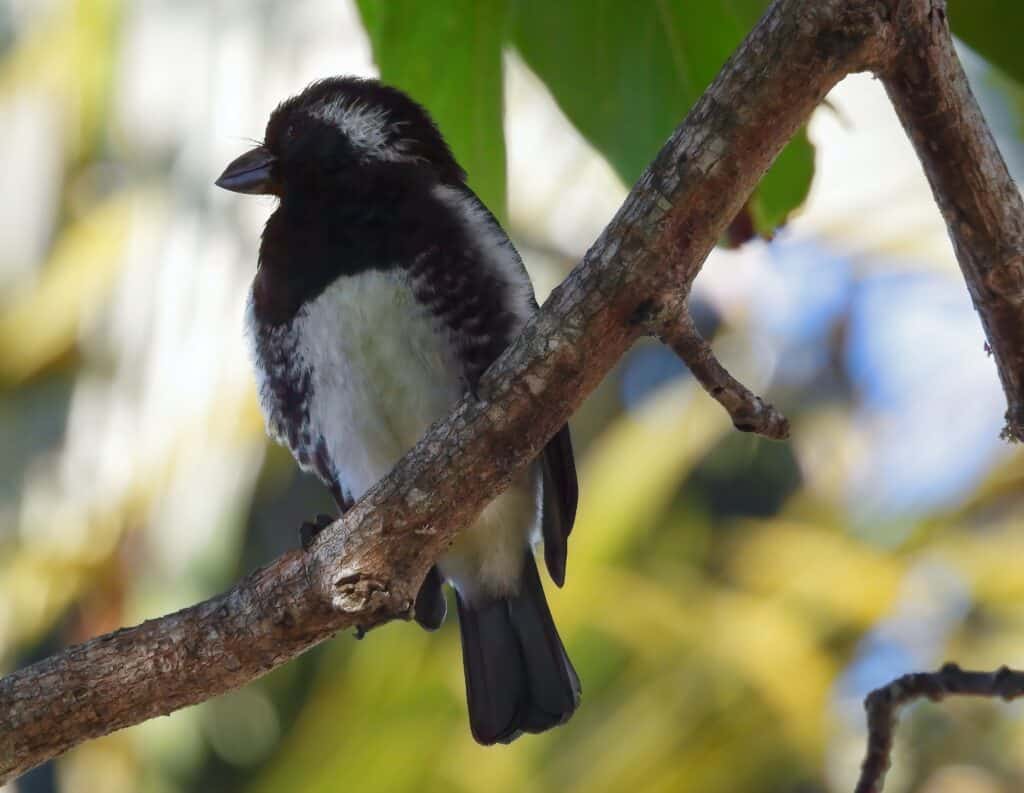
Overall, South Africa hosts about one tenth of the world’s bird species, and many of these can be seen in the winter months. The combination of incredible mammal viewing and mild temperatures, combined with the wonderful birding makes South Africa the place to be for winter birding!